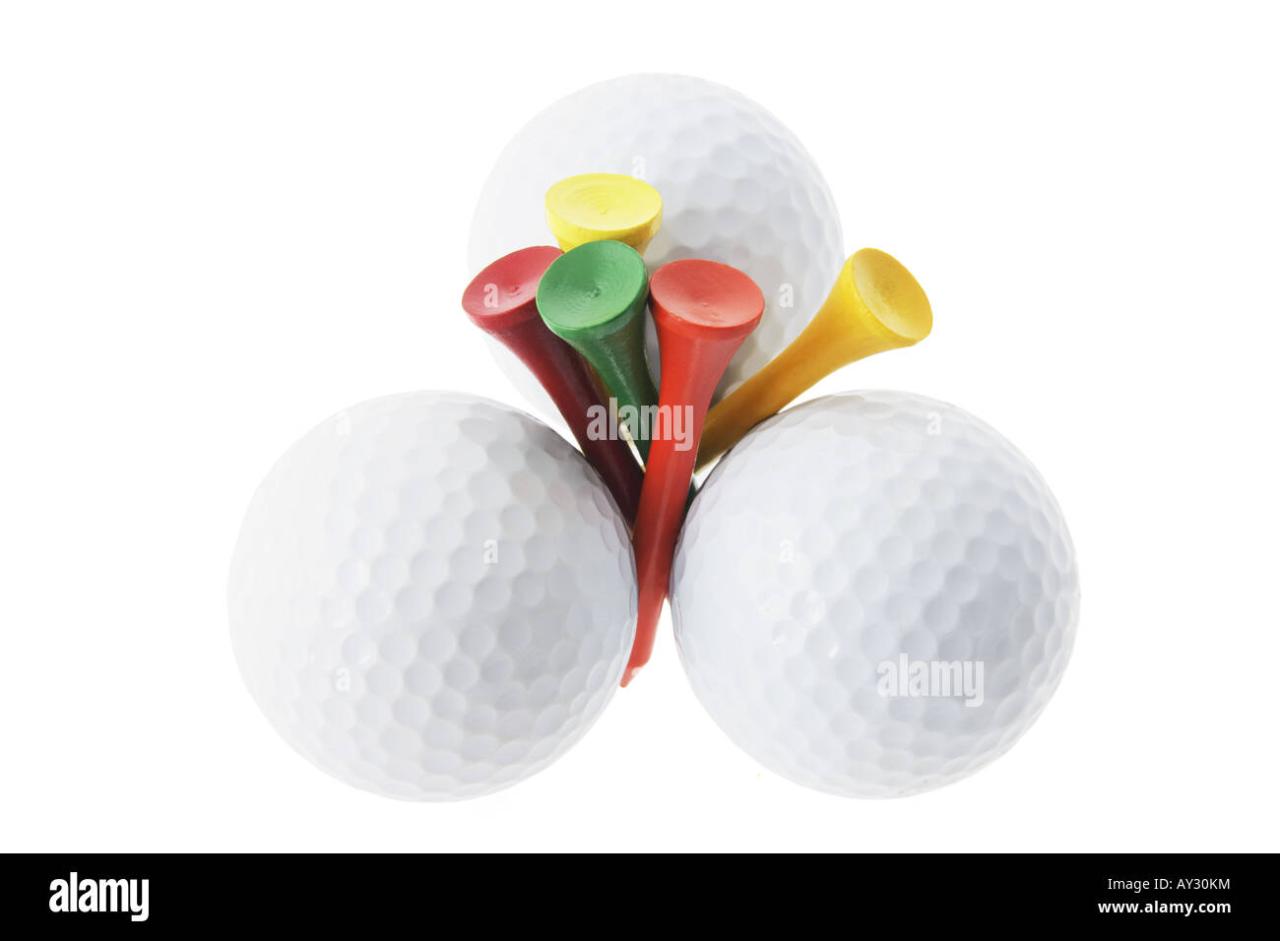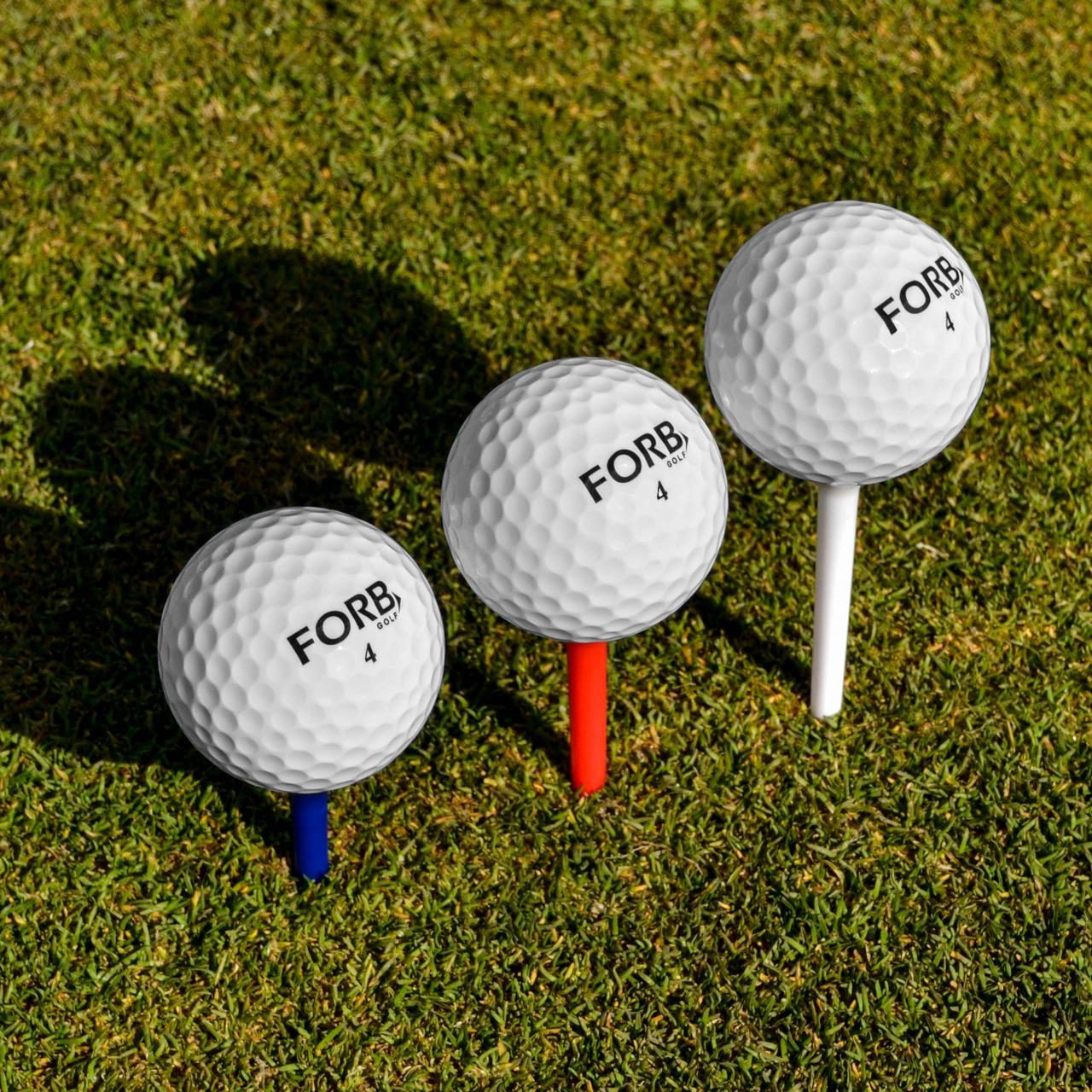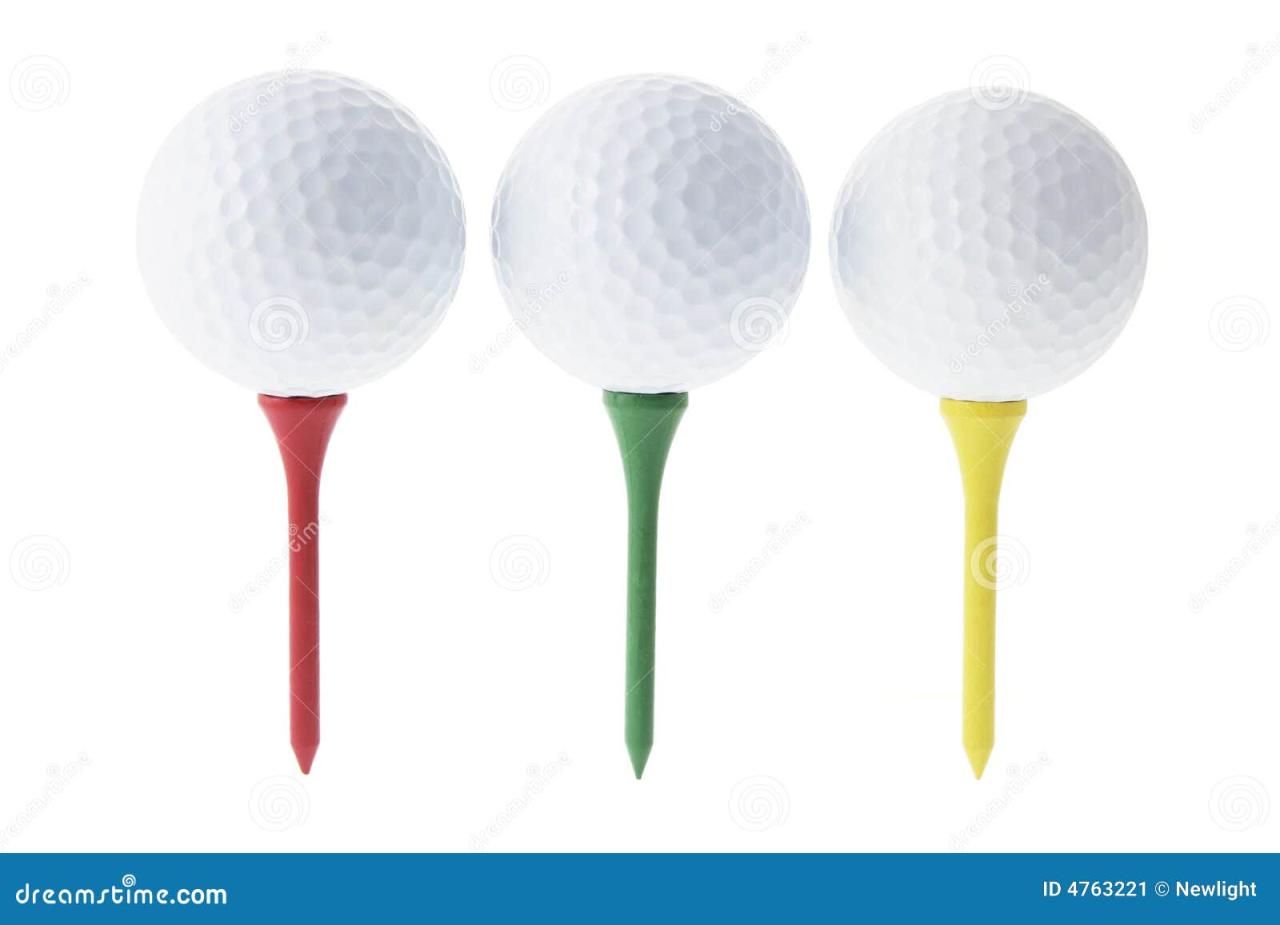Golf balls tees – Golf balls & tees, seemingly simple components, hold the key to unlocking optimal performance on the course. From the intricate design of a golf ball to the seemingly insignificant height of a tee, each element plays a crucial role in shaping a golfer’s shot.
This exploration delves into the intricacies of these seemingly simple components, uncovering how they impact ball flight, distance, and accuracy.
This article examines the various types of golf balls and tees, their construction, and the factors that influence their performance. We’ll explore how the interaction between these components affects ball launch angle, spin rate, and overall trajectory, providing insights that can help golfers of all skill levels elevate their game.
Golf Ball Types and Construction: Golf Balls Tees

Golf balls are a critical component of the game, influencing distance, trajectory, and spin. Understanding the different types of golf balls and their construction is essential for golfers of all levels. This knowledge allows players to select the ball that best suits their swing, skill level, and desired performance characteristics.
Types of Golf Balls
The construction of a golf ball plays a significant role in its performance. Golf balls are generally classified into different categories based on their number of layers: two-piece, three-piece, and multi-layer.
- Two-Piece Golf Balls: These balls are the simplest in design, consisting of a solid core and a durable cover. The core is typically made of a high-compression rubber or thermoplastic material, while the cover is often a durable ionomer or Surlyn.
Two-piece balls are known for their durability and affordability, making them a popular choice for beginners and recreational players. They offer a consistent trajectory and a relatively high launch angle, but their spin rates are typically lower.
- Three-Piece Golf Balls: Three-piece balls feature a core, a mantle layer, and a cover. The core is typically made of a softer rubber material, providing greater distance and a softer feel. The mantle layer, often made of a harder rubber material, adds control and spin.
The cover, typically made of urethane or a softer ionomer, provides increased spin and feel. Three-piece balls offer a balance of distance, spin, and feel, making them suitable for a wider range of golfers, including those with moderate to advanced skills.
- Multi-Layer Golf Balls: Multi-layer golf balls are the most complex, featuring four or more layers. These balls often include a core, a mantle layer, a mid-layer, and a cover. Each layer is carefully engineered to optimize specific performance characteristics. Multi-layer balls are designed for high-handicap players who seek maximum distance and control.
They offer the highest spin rates and softest feel, but they are typically more expensive than other types of golf balls.
Impact of Core Size, Cover Material, and Dimple Design
The core, cover, and dimple design of a golf ball all contribute to its performance.
Core Size
The size of the core impacts the ball’s compression and feel. Larger cores tend to be softer and provide a more forgiving feel, while smaller cores are harder and offer a firmer feel. Softer cores generally result in higher launch angles and lower spin rates, while harder cores produce lower launch angles and higher spin rates.
Cover Material
The cover material affects the ball’s spin, feel, and durability. Urethane covers provide the highest spin rates and softest feel, but they are less durable than ionomer or Surlyn covers. Ionomer covers offer a good balance of spin and durability, while Surlyn covers are the most durable but provide the least spin.
Dimple Design
Dimples on a golf ball help reduce drag and increase lift, contributing to longer distances and a straighter flight. The number, size, and shape of dimples can significantly impact the ball’s performance. Deeper dimples generally produce higher lift and lower drag, resulting in longer distances.
Golf Ball Types Comparison
| Golf Ball Type | Core Material | Cover Material | Intended Use | Target Player |
|---|---|---|---|---|
| Two-Piece | High-compression rubber or thermoplastic | Ionomer or Surlyn | Durability and affordability | Beginners and recreational players |
| Three-Piece | Soft rubber | Urethane or softer ionomer | Distance, spin, and feel | Moderate to advanced players |
| Multi-Layer | Multiple layers, often with a soft core | Urethane | Maximum distance and control | High-handicap players seeking maximum performance |
Golf Tees
Golf tees are essential accessories that elevate the game by providing a stable platform for the golf ball, allowing for a controlled and consistent launch. They come in various materials and designs, each with its own advantages and disadvantages. Choosing the right tee can significantly impact ball flight and overall performance.
Types of Golf Tees
Golf tees are primarily categorized based on their material and design.
- Plastic Tees: These are the most common type, known for their affordability and availability. They are typically made from durable, lightweight plastic and come in various colors and heights. Plastic tees are generally suitable for beginners and casual players, offering a good balance of performance and cost.
- Wooden Tees: Crafted from natural wood, these tees provide a more traditional feel and are known for their durability and resistance to breaking. Wooden tees often offer a slightly softer impact, potentially reducing stress on the clubhead. However, they can be more expensive than plastic tees and require careful handling to avoid splintering.
- Adjustable Tees: These innovative tees allow golfers to customize the height based on their club and shot requirements. They typically feature a telescopic design, allowing for precise height adjustments. Adjustable tees are popular among experienced players who prefer to fine-tune their tee height for optimal launch conditions.
Factors to Consider When Choosing a Golf Tee, Golf balls tees
Selecting the right golf tee involves considering several factors that influence ball flight and overall performance.
- Club Type: The type of club used for a particular shot determines the appropriate tee height. For example, drivers require taller tees to launch the ball high, while shorter tees are preferred for irons and wedges.
- Ball Type: Different golf balls have varying spin rates and launch characteristics. A higher-spinning ball may require a taller tee to optimize its flight, while a lower-spinning ball might benefit from a shorter tee.
- Playing Conditions: The condition of the course can also influence tee selection. For instance, a firm fairway might require a shorter tee to prevent the ball from digging into the ground, while a soft fairway might allow for a taller tee.
Inserting and Adjusting Golf Tees
Proper tee insertion and height adjustment are crucial for optimal ball launch.
To insert a tee, place it directly behind the ball, ensuring it is firmly planted in the ground. The tee should be positioned perpendicular to the ground, with the top of the tee slightly above the ball.
Adjusting the tee height involves considering the club type, ball type, and playing conditions. For drivers, a taller tee typically promotes a higher launch angle, while shorter tees are preferred for irons and wedges.
Golf Ball and Tee Interaction

The relationship between the golf ball and the tee is crucial in determining the initial flight characteristics of the shot. The tee height, type, and placement all play a role in influencing the ball’s launch angle, spin rate, and overall distance.
Tee Height and Ball Launch Angle
The height of the tee directly affects the launch angle of the golf ball. A higher tee generally results in a higher launch angle. This is because the ball is positioned higher off the ground, giving the clubface more room to impart an upward force on the ball.
A higher launch angle can lead to a longer carry distance and a higher trajectory, which can be advantageous in certain situations.
A higher launch angle can lead to a longer carry distance and a higher trajectory.
For example, a tee height of 1.5 inches could result in a launch angle of 10 degrees, while a tee height of 2.5 inches could result in a launch angle of 12 degrees. This difference in launch angle can significantly impact the ball’s flight path and overall distance.
Tee Height and Spin Rate
The height of the tee can also influence the spin rate of the golf ball. A higher tee generally results in a lower spin rate. This is because the clubface has less time to contact the ball at a higher tee height, reducing the amount of backspin imparted.
A lower spin rate can lead to a straighter ball flight and a lower trajectory.
A higher tee generally results in a lower spin rate.
For example, a tee height of 1.5 inches could result in a backspin rate of 2,500 rpm, while a tee height of 2.5 inches could result in a backspin rate of 2,000 rpm. This difference in spin rate can significantly impact the ball’s flight path and overall distance.
Tee Type and Ball Flight
Different tee types can also influence the ball’s flight and trajectory. For example, a traditional wooden tee can provide a stable platform for the ball, while a plastic tee can be more flexible and allow for a more consistent launch.
A longer tee can also help to increase the launch angle, while a shorter tee can provide a more controlled launch.
Different tee types can also influence the ball’s flight and trajectory.
Tee Height, Ball Position, and Clubface Angle
The relationship between tee height, ball position, and clubface angle is complex and interconnected. A higher tee height will generally result in a higher launch angle, but the ball position and clubface angle will also play a role in determining the overall flight path.
The relationship between tee height, ball position, and clubface angle is complex and interconnected.
For example, a golfer who hits the ball off the tee with a higher tee height and a more forward ball position will likely see a higher launch angle and a lower spin rate. However, if the golfer hits the ball with a lower tee height and a more back ball position, they will likely see a lower launch angle and a higher spin rate.
Golf Ball and Tee Performance
The selection of golf balls and tees significantly impacts driving distance, accuracy, and greenside control. Different combinations of golf balls and tees can affect performance in various playing conditions, including wind, humidity, and temperature. Understanding the impact of these variables is crucial for golfers seeking to optimize their performance.
Impact of Golf Ball and Tee Selection
The choice of golf ball and tee affects various aspects of a golfer’s performance. Here’s how:* Driving Distance:A higher launch angle and lower spin rate generally result in longer drives. A tee height that maximizes launch angle and reduces spin can contribute to greater distance.
Accuracy
A golf ball with a lower spin rate tends to fly straighter, while a tee height that reduces spin can enhance accuracy.
Greenside Control
A golf ball with a higher spin rate can help with short-game control, allowing for better spin and stopping power on the green. A tee height that promotes a lower launch angle can aid in controlling the ball’s trajectory.
Performance Comparison of Different Golf Ball and Tee Combinations
Here’s a breakdown of how different golf ball and tee combinations can impact performance:* Low Spin Golf Balls and High Tees:This combination often leads to longer drives but may compromise accuracy due to increased spin.
High Spin Golf Balls and Low Tees
This combination typically results in a lower launch angle, which can enhance accuracy but potentially decrease distance.
Mid-Spin Golf Balls and Medium Tees
This combination offers a balance between distance and accuracy, making it suitable for a wide range of players and conditions.
Optimizing Golf Ball and Tee Selection
To optimize golf ball and tee selection, consider the following:* Skill Level:Beginner golfers may benefit from a combination that prioritizes accuracy, while experienced golfers may prioritize distance.
Playing Style
A player who relies on a high launch angle and high spin rate may prefer a high-spin golf ball and a high tee. Conversely, a player who favors a low launch angle and low spin rate may opt for a low-spin golf ball and a low tee.
Playing Conditions
Wind, humidity, and temperature can significantly affect ball flight. For example, a low-spin golf ball may be beneficial in windy conditions, while a high-spin golf ball might be preferable in calm conditions.
“Choosing the right golf ball and tee can make a significant difference in your game. Experiment with different combinations to find what works best for you.”
Golf Ball and Tee Innovations

The golf industry is constantly evolving, with advancements in technology driving innovation in both golf ball and tee design. These innovations aim to improve ball performance, enhance player experience, and ultimately push the boundaries of the game.
Aerodynamic Enhancements
Aerodynamic improvements play a crucial role in maximizing distance and flight control. Golf ball manufacturers are exploring various design elements to reduce drag and optimize lift, resulting in longer drives and more consistent trajectories.
- Dimple Patterns:Modern golf balls feature intricate dimple patterns, meticulously engineered to minimize drag and maximize lift. These patterns create turbulent airflow around the ball, reducing resistance and increasing distance.
- Ball Cover Material:The cover material of a golf ball significantly impacts its aerodynamic properties. Advanced materials like urethane and ionomer offer improved spin control and durability, enhancing both distance and accuracy.
- Ball Construction:The internal construction of a golf ball, including the core and mantle layers, influences its flight characteristics. Innovations in core design and material selection are constantly pushing the boundaries of ball performance.
Advanced Materials
The use of advanced materials in golf ball and tee design is revolutionizing the game. These materials offer enhanced durability, improved performance, and greater sustainability.
- High-Performance Polymers:Golf ball manufacturers are utilizing high-performance polymers to create covers that are both durable and responsive, resulting in increased spin rates and improved feel.
- Lightweight Composites:Golf tees are increasingly made from lightweight composites like carbon fiber, offering enhanced durability and reduced weight. These materials allow for greater tee stability and improved launch angles.
- Biodegradable Materials:Sustainability is becoming increasingly important in the golf industry. Manufacturers are exploring biodegradable materials for golf balls and tees, reducing environmental impact.
Impact on Performance and Player Experience
These innovations in golf ball and tee design have a profound impact on both ball performance and player experience.
- Increased Distance:Aerodynamic improvements and advanced materials have led to significant increases in driving distance, allowing golfers to reach greater distances off the tee.
- Improved Accuracy:Enhanced spin control and improved ball construction contribute to greater accuracy, allowing golfers to hit more precise shots and achieve better scores.
- Enhanced Feel:Innovations in cover materials and ball construction provide golfers with a more responsive feel, enhancing the overall playing experience.
- Greater Durability:Advanced materials and improved manufacturing processes have resulted in golf balls and tees that are more durable, lasting longer and providing greater value.
Future of Golf Ball and Tee Technology
The future of golf ball and tee technology holds exciting possibilities.
- Smart Balls:The integration of sensors and data analytics into golf balls could provide golfers with real-time feedback on their swing and shot performance. This data could be used to improve their technique and achieve better results.
- Personalized Tee Design:Advances in 3D printing and customization technologies could enable golfers to create personalized tees that are specifically tailored to their individual swing characteristics.
- Sustainable Materials:The use of sustainable materials and manufacturing processes will continue to be a key focus in the golf industry, reducing environmental impact and promoting responsible practices.
Expert Answers
What is the best golf ball for beginners?
For beginners, a two-piece golf ball is generally recommended due to its durability and consistent performance. These balls offer a good balance of distance and control.
How do I choose the right tee height?
The ideal tee height varies based on your club type and desired launch angle. Generally, longer clubs require higher tees, while shorter clubs benefit from lower tees.
What are the advantages of using a multi-layer golf ball?
Multi-layer golf balls offer increased spin rates, improved control, and a softer feel. These features are particularly beneficial for experienced golfers seeking to maximize their performance.

